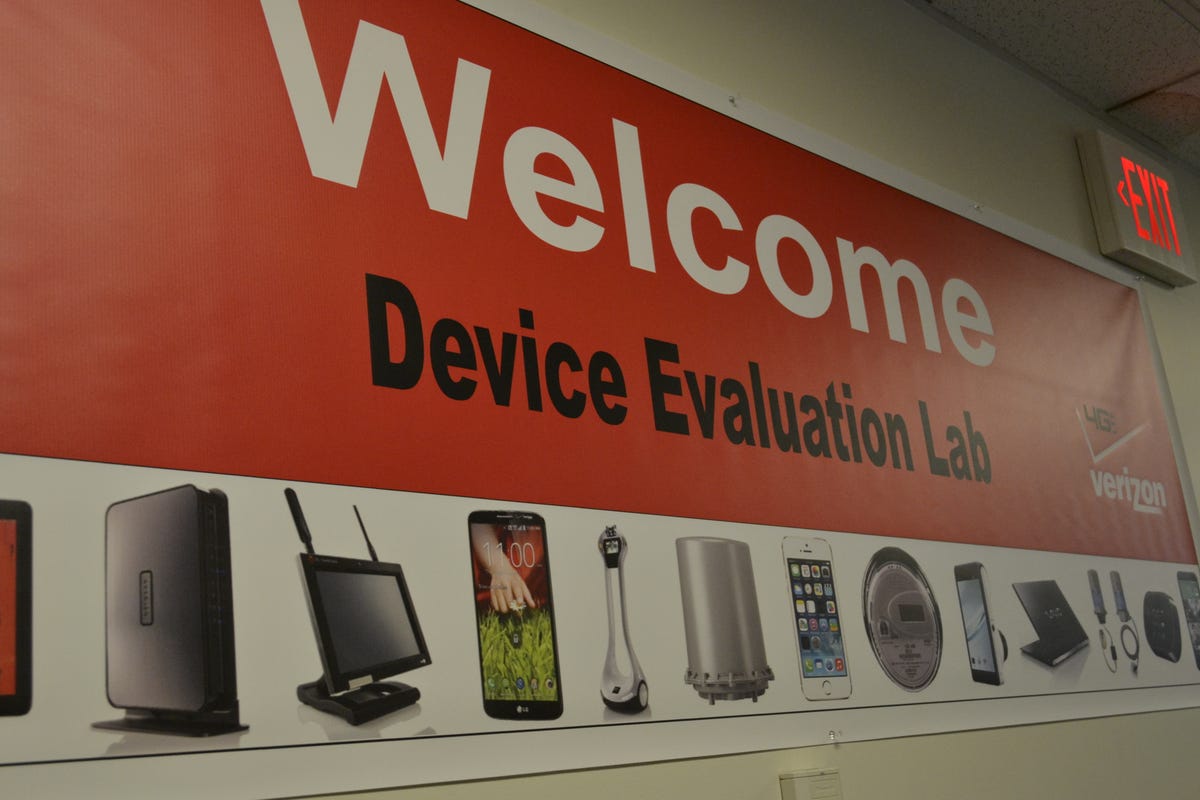
Welcome to the labs
Verizon took CNET on a tour of its device-testing lab in Bedminster, NJ, this week, where it showed off some of the work it does to review smartphones and tablets before approving them for sale to customers, including drop testing, antenna testing and audio testing.
The audio anechoic chamber
In this testing room, Verizon manager Sherif R. Sherif describes how Verizon reviews smartphones' speakers and microphones. The space is echo-free, also known as anechoic, and the room is built on springs to diminish vibrations from trucks along a nearby highway.
Can you hear me now?
Here's a rubber-eared mannequin in the audio anechoic chamber.
Eliminating background noise
In another testing room, Sherif talks about how Verizon reviews how well a phone can eliminate background noise, using speakers that blast sounds simulating a train station or busy restaurant.
Antenna checkup
Here a rotating yellow mannequin head is used to test the effectiveness of a phone's antenna.
Antenna results
On a monitor outside the room, testers can see how well the antenna performed, with round and red being good and concave and green being poor.
Phone drop testing
Verizon's Steve Manetta, who tests hardware reliability, prepares a phone for a drop test. Testers can then review the drops using a slow-motion camera.
The cell phone museum
Near the testing rooms, Verizon keeps dozens of old cell phones, dating back to the 1980s, in a series of glass cases.
The iPhone's grandfather
Here are a few of the first consumer cell phones, including a 1989 Motorola model and a 1986 General Electric phone.

